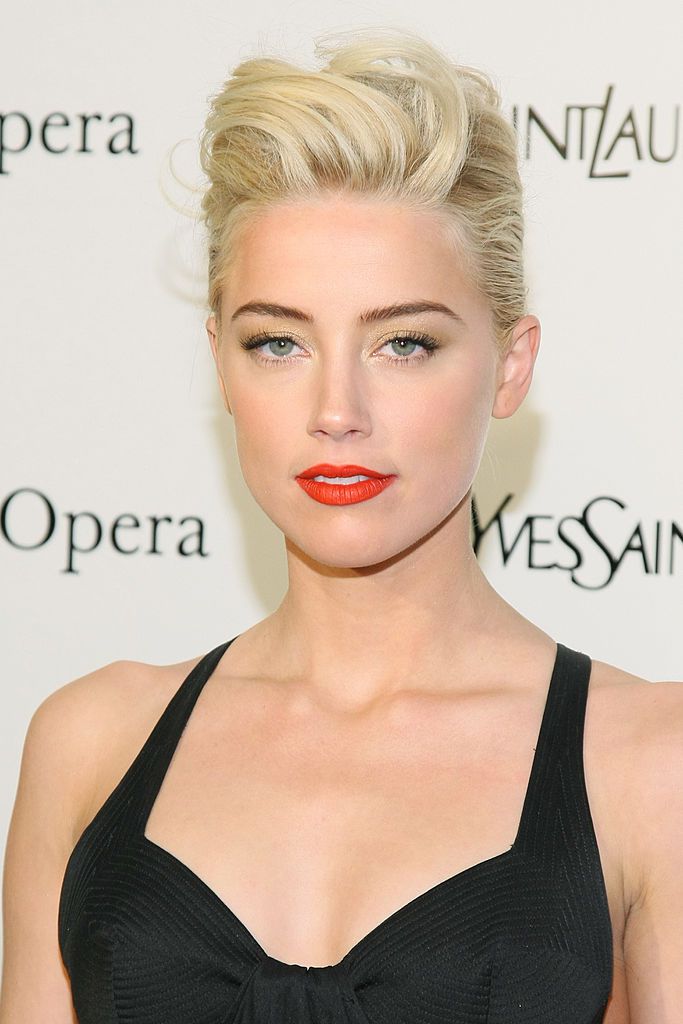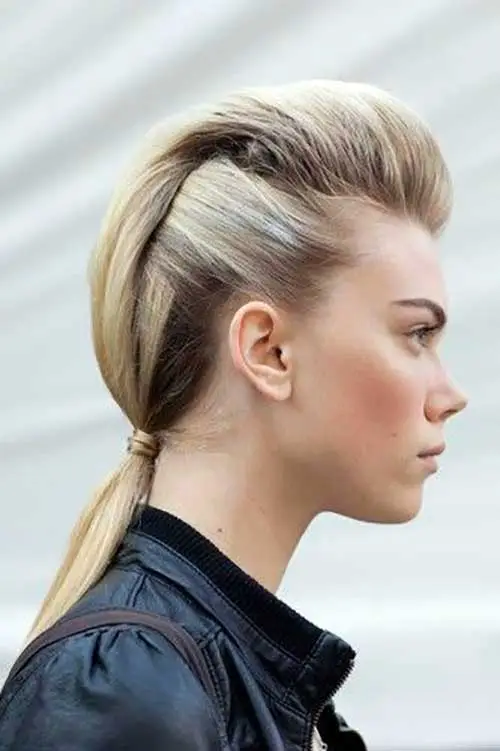
The Iconic Pompadour Hairstyle: A Timeless Classic
Origins of the Pompadour
The pompadour hairstyle boasts a rich history. It originated in the 18th century. Madame de Pompadour, a mistress of King Louis XV of France, inspired the style. Her elaborate upswept hair became a fashion sensation. The look evolved over time. It adapted to different eras and cultures.
Defining Features of the Pompadour
The pompadour hairstyle stands out with its distinctive characteristics. Volume reigns supreme in this style. Hair sweeps upward and backward from the forehead. It creates a dramatic front wave or quiff. The sides remain shorter and sleeker. This contrast emphasizes the height and fullness on top.
Evolution Through the Decades
1950s Rock ‘n’ Roll Era
The pompadour hairstyle gained massive popularity in the 1950s. Elvis Presley became its most famous ambassador. His slicked-back style epitomized rock ‘n’ roll rebellion. Greasers and teddy boys adopted the look. It symbolized youth culture and defiance.
1960s Mod Movement
The sixties saw a softer version of the pompadour. Mod fashion influenced hair trends. The style became less extreme. Volume remained key. Bangs and fringe elements added variety.
1970s and 1980s Revival
Punk and new wave scenes embraced the pompadour. Artists like David Bowie sported avant-garde versions. The 1980s saw big hair trends. The pompadour fit right in. Both men and women rocked voluminous styles.
Modern Interpretations
Today’s pompadour blends classic and contemporary elements. Undercuts create sharp contrasts. Fades add dimension to the sides. Textured tops offer a relaxed vibe. The style adapts to various hair types and lengths.
How to Achieve the Perfect Pompadour
Haircut Basics
Start with the right foundation. Keep the top longer than the sides. This length difference creates the signature shape. Communicate clearly with your stylist. Discuss your desired height and volume.
Styling Tools and Products
Equip yourself with the right tools. A round brush helps create volume. A blow dryer directs hair upward and back. Combs assist in shaping and defining. Choose products that suit your hair type. Mousses and volumizing sprays add body. Pomades and waxes provide hold and shine.
Step-by-Step Styling Guide
- Begin with damp, towel-dried hair.
- Apply a volumizing product to the roots.
- Use a blow dryer and round brush to lift hair at the roots.
- Direct hair backwards as you dry.
- Create extra height at the front hairline.
- Once dry, shape the pompadour with your hands or a comb.
- Apply a styling product for hold and definition.
- Set the style with hairspray if desired.
Variations of the Pompadour
Classic Pompadour
This version stays true to its roots. It features high volume and a sleek finish. The top sweeps back dramatically. Sides remain short and neat.
Textured Pompadour
A modern twist on the classic. This style incorporates messy, piecey texture. It offers a more casual, effortless look. Ideal for those who prefer less polish.
Undercut Pompadour
Combines the pompadour with an undercut. Very short sides and back contrast with the voluminous top. Creates a bold, edgy appearance.
Pompadour Fade
Blends the pompadour with a fade haircut. The sides gradually shorten from top to bottom. Offers a clean, contemporary aesthetic.
Long Pompadour
Extends the traditional pompadour length. Works well for those with naturally long hair. Requires extra styling and product for hold.
Curly Pompadour
Embraces natural curls or waves. Focuses on enhancing volume and texture. Celebrates diverse hair types within the pompadour style.
Maintaining Your Pompadour
Regular upkeep ensures a polished pompadour. Schedule haircuts every 4-6 weeks. This maintains the shape and proportions. Invest in quality hair care products. Shampoos and conditioners for your hair type matter. Consider using leave-in treatments. These can add moisture and manageability.
Practice your styling technique. Daily repetition improves skills. Experiment with different products. Find what works best for your hair. Protect your style while sleeping. Use a satin pillowcase to reduce friction.
Pompadour for Different Face Shapes
The pompadour adapts to various face shapes. Oval faces suit most pompadour styles. Round faces benefit from added height. This elongates the face. Square faces look great with softer, textured versions. Heart-shaped faces can balance proportions with fuller sides.
Many celebrities have sported memorable pompadours. Elvis Presley remains the king of the classic style. James Dean embodied the rebellious 1950s look. Bruno Mars brings a modern twist to the pompadour. David Beckham showcases versatile, sports-friendly versions. Janelle Monáe proves the pompadour works for all genders.
The pompadour transcends mere hairstyle status. It represents cultural movements and attitudes. In film, it signifies rebellion and nonconformity. Music scenes from rockabilly to punk embrace its boldness. Fashion runways regularly feature pompadour-inspired looks. The style appears in art, advertising, and media. Its iconic status ensures ongoing relevance and recognition.
Pompadour for Women
Women have long embraced the pompadour’s versatility. Vintage pinup styles often featured feminine pompadours. Contemporary versions offer edgy, androgynous options. Long hair can be styled into elegant pompadour updos. Short hair creates bold, statement-making looks. The style empowers women to play with volume and height.
The pompadour adapts well to professional settings. Sleeker, more controlled versions work in conservative offices. Creative industries welcome bolder interpretations. The key lies in proper styling and maintenance. A well-groomed pompadour conveys confidence and attention to detail. It makes a strong impression in the workplace.
Straight hair creates smooth, classic pompadours. Wavy hair adds natural texture and movement. Curly hair produces voluminous, eye-catching styles. Coarse hair holds shape well with the right products. Fine hair benefits from volumizing techniques. Each hair type brings unique qualities to the pompadour.

Common Pompadour Styling Mistakes
Avoid these pitfalls for a flawless pompadour:
- Using too much product
- Neglecting the foundation haircut
- Overdrying hair, causing damage
- Ignoring hair type and texture
- Failing to adapt the style to face shape
- Not maintaining regular trims
- Choosing the wrong styling tools
The pompadour continues to evolve. New techniques and products emerge. Barbers and stylists innovate constantly. Gender-neutral styling gains popularity. Sustainable and natural hair products influence trends. Technology may introduce new tools for achieving the look. The pompadour’s adaptability ensures its ongoing relevance.
Certain accessories complement the pompadour well. Headbands can add a retro touch. Decorative clips accentuate the style’s volume. Bandanas offer a rockabilly vibe. Hair flowers suit vintage-inspired looks. Choose accessories that enhance without overwhelming the style.

Caring for Your Scalp with a Pompadour
Maintaining a healthy scalp supports a great pompadour. Regular cleansing prevents product buildup. Exfoliating treatments remove dead skin cells. Moisturizing the scalp prevents dryness and flaking. Massage techniques improve blood circulation. A healthy scalp produces stronger, more manageable hair.
The pompadour influences fashion beyond hairstyling. Retro clothing complements the classic look. Leather jackets pair well with rebellious versions. Suits enhance professional pompadour styles. Accessories like sunglasses and jewelry can accentuate the look. The hairstyle becomes part of a complete aesthetic.
Create your own styling aids for the perfect pompadour. Craft a hair rat for extra volume. Use foam rollers for heat-free styling. Experiment with natural setting lotions. Master the art of backcombing for height. Learn pin curl techniques for vintage looks. DIY approaches offer creativity and personalization.
Wearing a pompadour makes a statement. It projects confidence and individuality. The style’s height literally helps wearers stand out. Some find the styling routine meditative. Others enjoy the transformative aspect. The pompadour allows for self-expression and creativity. It can boost self-esteem and alter perception.
Conclusion
The pompadour endures as a iconic hairstyle. Its versatility spans centuries and cultures. From royal courts to rock stages, it makes a statement. Modern interpretations keep it fresh and relevant. With the right techniques and products, anyone can rock this look. The pompadour remains a powerful form of personal expression. It continues to shape the landscape of hair fashion.



